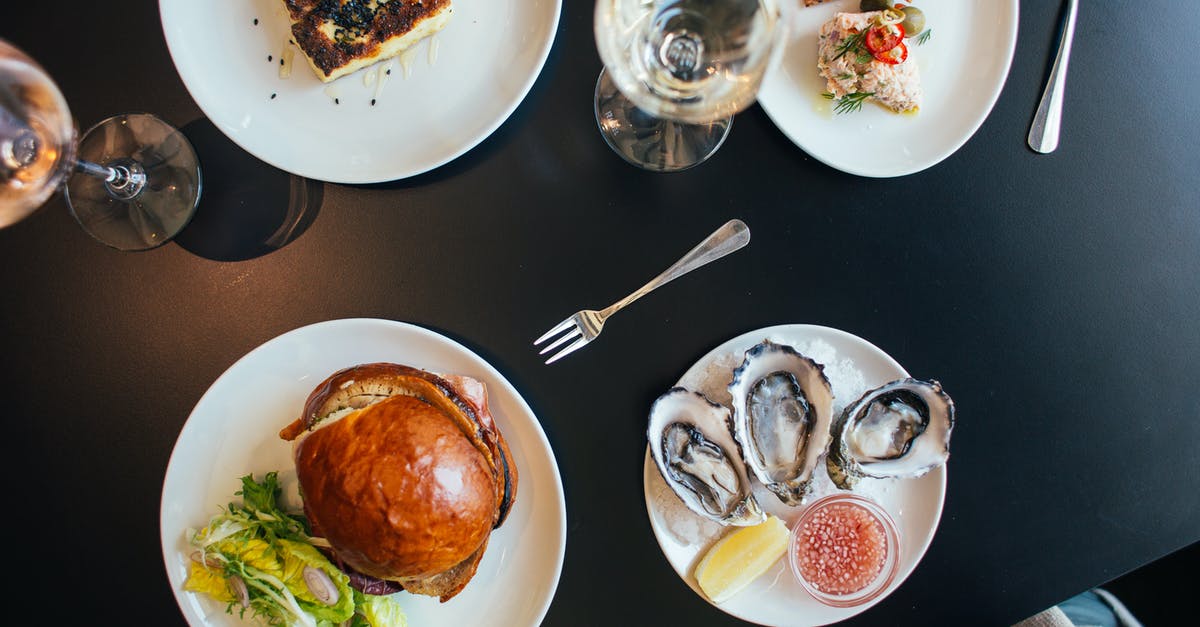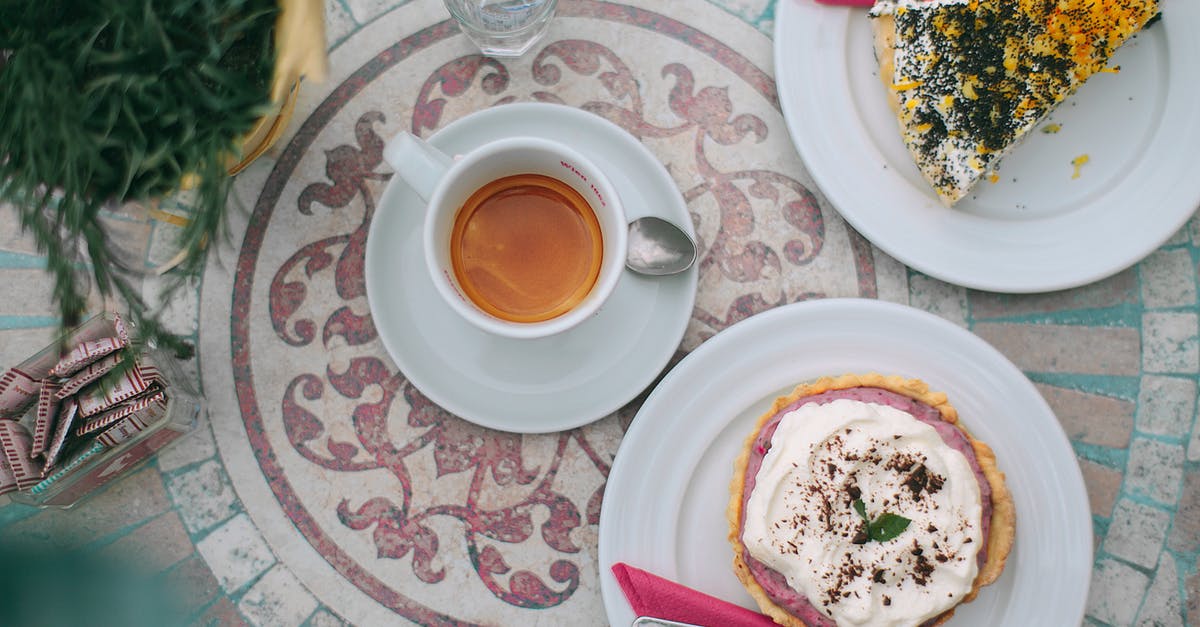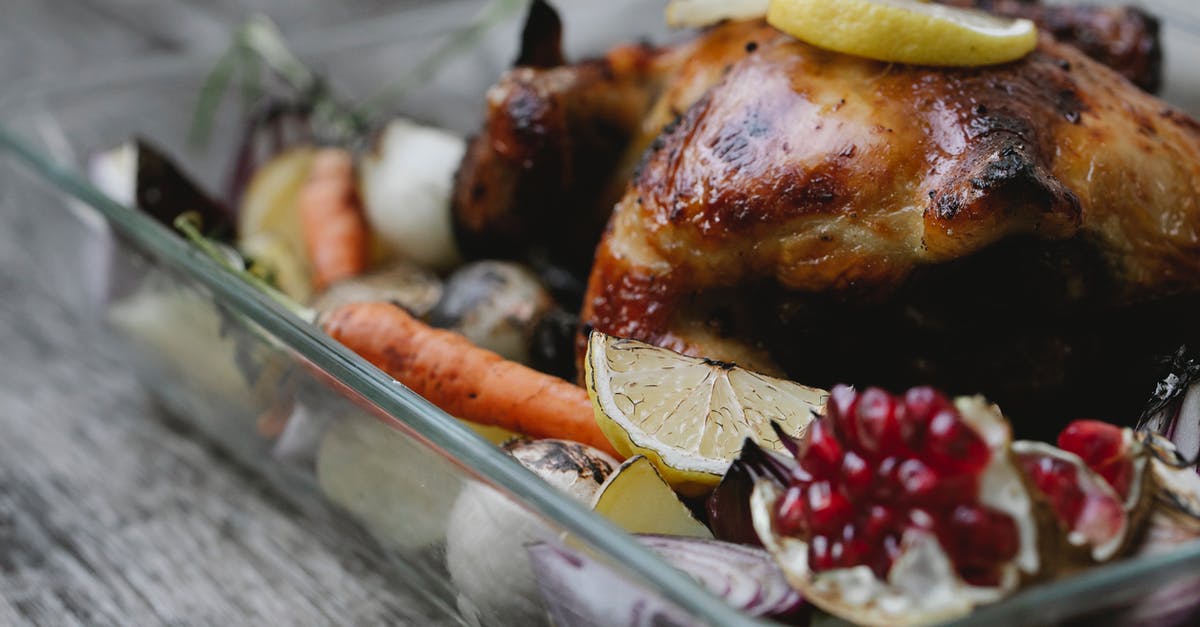Glass Dish Baking Temparature

Generally I have heard that most recipes are designed for baking in metal dishes. I have also heard that glass will get hotter than metal, and thus I should cook it at a lower temperature for longer.
Does anyone know whether these statements are true? Am I going to burn the edges if I leave it at the same temperature? What is the truth behind this?
Best Answer
First, the short answer:
There's a lot of erroneous information circulating concerning glass bakeware, and very few reliable sources or repeatable experiments seem to be cited. In general, I'd say that the variance among different metal pans of different materials, colors, thicknesses, and coatings will have more significant effects than the difference between glass and metal. So, if you're someone who worries a lot about pan color or thickness and adjusts your oven up or down by a few degrees for it already, then yes, this may be a concern. If you're someone who just assumes all metal baking pans are equivalent anyway, glass is not going to behave much differently -- I'd just say monitor your food when trying a new pan/dish, and adjust your time and temperature accordingly.
Now, the long answer:
Part of the problem with comparing glass and metal is that there are so many differences:
Metal pans conduct heat faster than glass, which can change both how evenly the heat gets distributed throughout the pan and how fast things cook. But this is mostly relevant when the pan is changing temperature (as when first put in the oven) or heated unevenly.
Metal pans can vary in color: darker pans will cook faster, while lighter or more reflective ones will cook more slowly. Glass is generally transparent, which decreases some types of radiative heat from the pan color, but it also allows infrared light to pass through which increases radiative heat.
Metal pans are usually quite thin compared to glass. Glass therefore heats up and cools down more slowly, so it will be less responsive to changes in baking temperatures. (On the other hand, metal pans can also vary significantly in thickness, too.)
Each of these factors may be more or less relevant depending on your specific baking situation and recipe. For example, if we take the last consideration from the list: if you're cooking something for a relatively short time, glass dishes may spend most of the baking time just warming up, which will affect browning and doneness on elements in contact with the pan. But if you're baking a dish for a long time, this factor is less relevant, and the extra heat which is transmitted through the clear glass may actually cause food to cook faster.
There's a common rule-of-thumb passed along in many cooking sources that one should decrease the oven temperature by 25F when using a glass baking dish and perhaps decrease cooking time as well. Other sources agree with the 25F decrease, but recommend that cooking time will be increased. But I've seen no reliable source justifying when this is necessary or what exactly we are comparing the glass dish with! If we're comparing glass to its closer cousin, a ceramic casserole dish, then yes, in many cases a glass dish may cook slightly faster due to the extra heat transmitted through the clear glass. But it's much more complicated for comparisons to metal. Harold McGee in On Food and Cooking seems at one point to lump glass together with light-colored dull metal pans in terms of overall baking properties, pointing out that both will transmit heat better than shiny metal pans and thus will cook (about 20%) faster. But dark colored or black pans will increase browning and cooking even more. I recall seeing a Cooks Illustrated test some time ago that basically claimed the oven temperature reduction for glass was generally unnecessary, but I don't recall the details (and can't find the reference now).
In terms of actual empirical data, well, there's this source on browning, which baked dough for 15 minutes in four dishes of the same size but different colors and materials. Glass here performed slower than a black pan or thin (shiny) aluminum, but faster than white ceramic. But we can draw few conclusions from such a limited test, since (as I pointed out above) glass dishes take longer to heat up and would likely have performed differently in a longer bake.
All of that said, I would offer a few general guidelines:
If baking for a short time (say, less than 20-30 minutes), the lag-time in glass warming up will be significant. Cooking may be somewhat slower for food in contact with the glass surface compared to a metal pan. In a hot oven, it may be useful to lower the oven temperature somewhat and cook longer to allow the food in contact with the glass to "catch up" with the top of the food (which might otherwise brown faster).
When baking for longer times, glass will cook and brown somewhat faster than shiny metal pans, about as fast as dull (light) metal, but not as fast as dark metal pans. In that case, you may want to make small adjustments in the same way as you might for different colored metal baking pans.
If baking a casserole or similar wet dish and using glass instead of opaque ceramic, it may cook and brown somewhat faster due to heat transmitted through the clear dish.
Glass will generally retain more heat when removed from the oven than metal pans, so baked goods or other food left in the glass dish will continue to cook somewhat longer. In some circumstances, this may justify removing the dish from the oven when slightly underdone or else removing the contents (particularly baked goods) from the pan earlier.
I don't think there's any truth to the general statement that glass always "cooks faster." Lowering the oven temperature slightly may be a good idea if you are concerned about the top surface browning before the bottom in a particular recipe, but glass is not a unique material to do that for.
Overall, I'd recommend just using other doneness indicators (internal temperature, browning, texture, firmness, etc.) to determine when your food is done. The one nice thing about glass baking dishes is that you can view the food from many more angles, which can often give you information about how fast the dish is cooking on the bottom as well as the top -- and you can adjust oven temperature as needed to try to even things out.
Pictures about "Glass Dish Baking Temparature"



Quick Answer about "Glass Dish Baking Temparature"
The standard advice for baking in glass is to lower the oven temperature by 25°F from what the recipe calls for, and bake up to 10 minutes longer.Can glass go in a 400 degree oven?
You can use a Pyrex oven-safe dish in a 400-degree oven. Before the first Pyrex pie plate was manufactured in 1916, home cooks didn't have access to glass bakeware that withstood both high and low temperatures without breaking.Can I use a glass pan at 425 degrees?
Despite being designed for baking, Pyrex cookware can't sustain temperatures above 425 degrees Fahrenheit.Can you bake a glass dish at 350?
Glass bakeware is heavier and slower to heat than metal, but once it's hot\u2026it retains that heat for much longer. So when using a glass pan to bake something like a cake or batch of brownies, you may find that the sides and bottom are brown at a much faster rate than the interior cooks.Oven Temperature Difference if Using a Metal or Glass Baking Pan : Desserts \u0026 Baking Tips
More answers regarding glass Dish Baking Temparature
Answer 2
My comments regarding this issue are directed toward baking, specifically. The long answer above makes some good points, regarding light and dark metal, but I want to address what goes into the pan.
Most baking recipes in a glass pans are high in sugar (coffee cake, brownies, layer cakes). The average baking time for such recipes ranges from 25 minutes to 50. Glass acts like an insulator in these situations: slower to heat up, retains heat longer than (light colored) metal pans.
Ever wonder why brownies in a glass pan have that higher, harder edge around the outside? The sugar in the recipe acts like a liquid as the brownies bake, migrating toward the edges. The slower-heating outsides tend to let the edges rise further before they heat up and set; once the edges set, the extra sugar recrystallizes and the edges are much harder than the center.
Cakes in glass pans will have darker, harder edges for the same reason. For sweet baking, we recommend lowering the oven temperature by 25° to even out the rate and area of temperature rise once a pan goes into the oven.
For a casserole, this isn't as important. For dessert, it's worth being aware of.
Answer 3
I would add another dimension along which the pan types might differ significantly, which would be how evenly they cook the top versus the sides and bottom. At the top the only contact is with the air, which is an insulator, retains little heat and conducts it slowly from the walls and elements of the oven...though this is mitigated quite a lot by the circulation of the air that results naturally (even without a fan) from convection. Given you have a poor conductor on top, I'd expect using a poorly conducting pan would promote more even cooking.
Not that even cooking is necessarily a virtue. People do brulee and toast the outsides of things. In a well conducting pan, I guess you're effectively toasting the sides and bottom.
----End of meditation---
Sources: Stack Exchange - This article follows the attribution requirements of Stack Exchange and is licensed under CC BY-SA 3.0.
Images: ROMAN ODINTSOV, Rachel Claire, Maria Orlova, Tim Douglas
